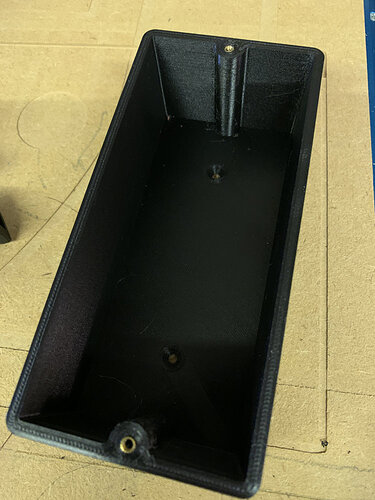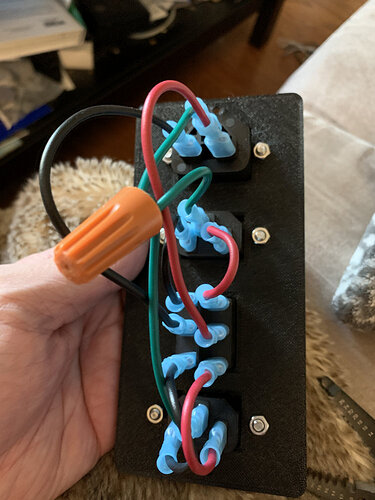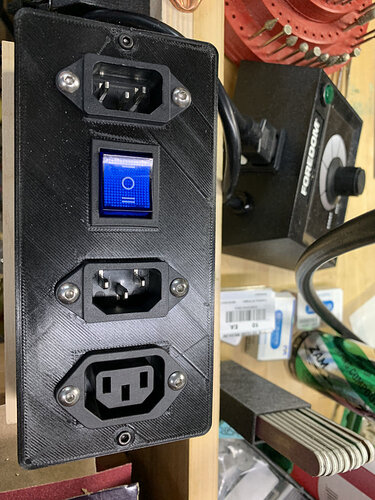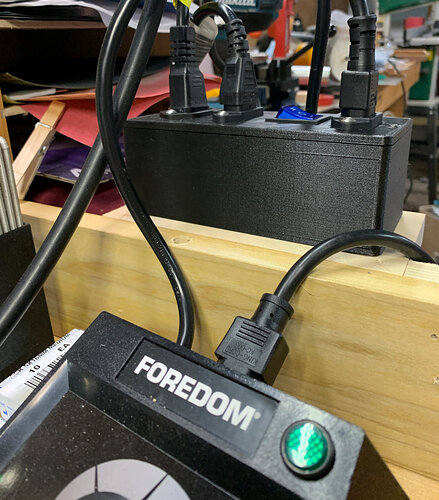I like both the foot control on the Foredom LX and the tabletop (for different things), but I was NOT fond of having to swap cables each time I wanted to switch from one to the other, so I designed a built a switch controller for it, so I can just flip the switch and use the tabletop or flip it back and use the foot controller (or turn them both off).
Looks great . Where did you get the parts and the box?
The box I designed and 3D printed in CAD. Can share the files if anyone’s interested.
Parts from Amazon.
Cool.
Thanks Neil
Here are the files as well as some instructions on where to find parts. Since it’s all DC power in there, it doesn’t much matter what you’re printing it with, but I used a higher temperature Carbon Fiber PETG material.
DC or AC has no bearing for insulation purposes.
Voltage has, high voltage needs better insulation materials.
Filament with carbon fiber, if the insulation is important, should be avoided.
Carbon fiber is conductive.
So if insulation properties are important, better use straight PETG.
There is zero conductivity in the filament. No CF filament has conductive properties that are in any way measurable. There’s some graphene filament that does. But we’re talking broken strands of CF that are broken during the thermal decomposition and reforming. It’s as good an insulator as a nylon box. And the insulation from heat is also fine. It can’t obtain the heat necessary to create an issue even if there were a problem with the wiring, which there is not.
The reason for the comment was your reference to DC, as if DC has any lesser need for insulation.
Under ordinary conditions there is no difference.
The only consideration regarding insulation is
voltage. Under high voltage conditions there might be some potential build up in the carbon strands, at least in the theoretical world 
Regards Per-Ove
Sorry… I didn’t explain my comment very well. There’s usually a good bit more heat generated in the AC to DC conversion if I were doing it inside the box. But since I’m not, there’s not that excess heat loss (it’s negligible, but it could be an issue for, say, PLA, if it got up to 60C – a not unreasonable temp for a converter, since PLA’s glass transition temp is 60).
Now I follow you 

Nice work.
The only suggestion that I could make is to consider the use of the new wire splices that are out now. An industrial electrician friend of mine turned me on to them, and I love them.
I like the Wago style, if you for some reason need to redo things. Just open the lever, do your stuff and reconnect.
No need to cut and restrip the insulation.
I have a bunch of them here, but I didn’t have any 3-wire on-hand (2, 4, 5s) because they’re my most-used. I like them, too. But I just had some spare wire nuts. And they work. 




